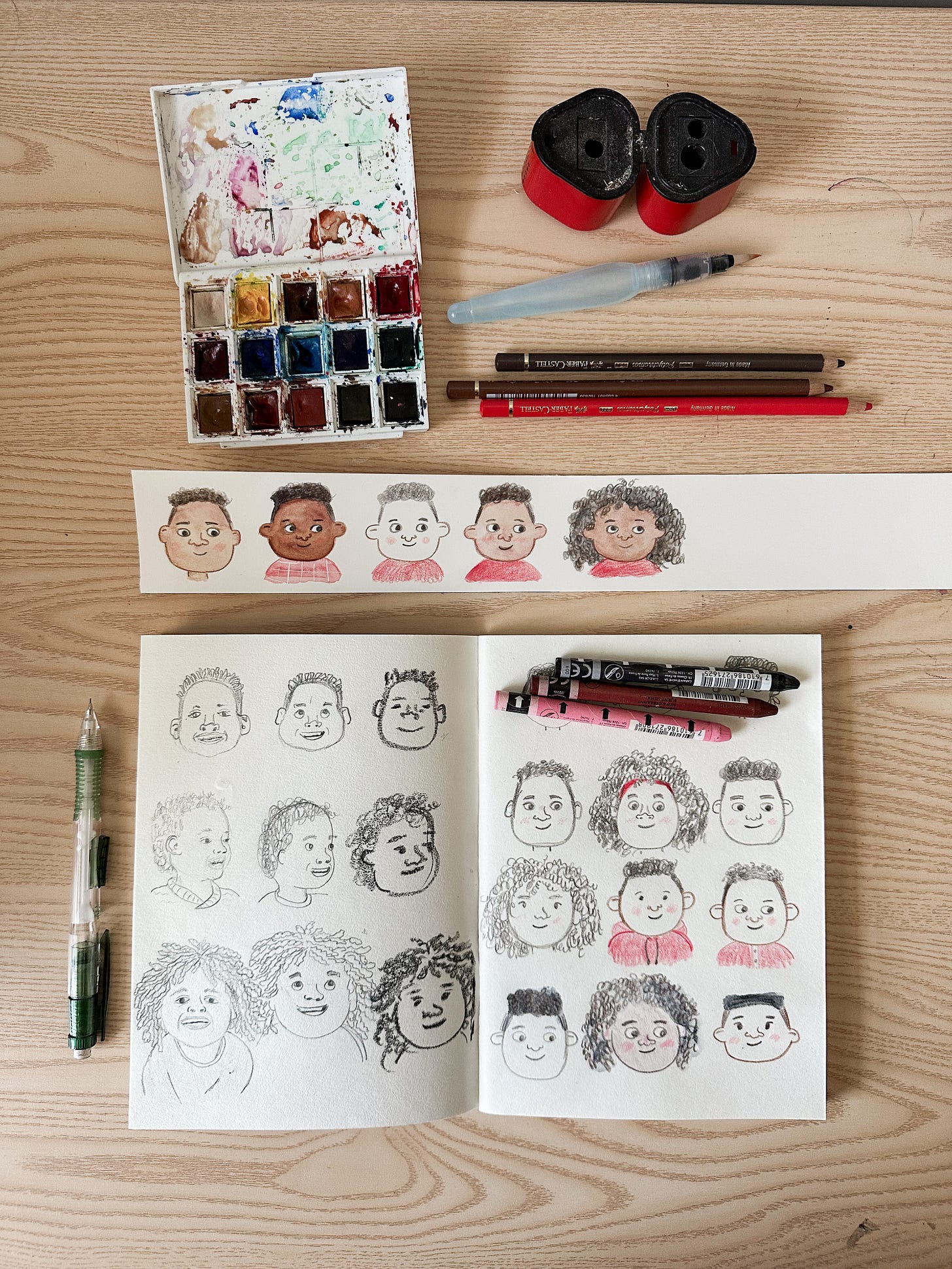3 Character Consistency Mistakes That Every Beginner Illustrator Makes
3 consistency mistakes that can derail your children's book (and how to fix them)
Hello Artathoners (worse?)
Yesterday we talked about why characters need to look the same on every page of your children's book. As promised, today I'm sharing the three biggest consistency mistakes that every illustrator makes at some point (even professionals!) and—more importantly—how to fix them.
The Character Marathon
Creating a children's book is like running a character marathon. Your character needs to appear dozens of times throughout the book while staying recognizable and engaging. Unfortunately, many illustrators hit consistency "walls" along the way.
Let's look at the three most common consistency mistakes and their solutions:
Mistake #1: Not Taking Time to Know Your Character
Many illustrators dive straight into creating book pages without first developing a deep understanding of their character's visual elements.
The result? By page 10, your character starts to drift. The eyes get larger, the head shape changes slightly, or the proportions shift without you realizing it. GUILTY! (As my art directors will tell you, thank God for them!)
The solution: Character Exploration
Before drawing a single page of your final book, take time to get to know your character:
Draw them multiple times from different angles
Explore various expressions and poses
Identify their defining features
This isn't "extra work" - it's essential preparation that saves countless hours of frustration later!
Mistake #2: Struggling with Different Angles and Poses
One of the biggest consistency mistakes is losing your character's recognizable features when drawing them from new angles or in action poses.
The result? Your character might look great from the front, but becomes unrecognizable in profile or when jumping, running, or interacting with other characters.
The solution: Shape Breakdown
Understanding the basic shapes that make up your character is crucial:
What simple forms create your character's head?
What proportions stay consistent regardless of pose?
How do these shapes connect and interact?
When you understand your character as a collection of simple shapes, you can reconstruct them accurately from any angle or pose.
Mistake #3: Inconsistent References Throughout the Process
Many illustrators work from memory or different references as they progress through their book, leading to subtle but noticeable changes.
The result? Your character gradually transforms throughout the book, with readers unable to pinpoint exactly what changed, but feeling something is "off."
The solution: Character Reference Sheet
Create a comprehensive character reference sheet as your consistent guide:
Color palette
Size comparisons
Key measurement relationships
Signature features and expressions
We All Make These Mistakes
Want to know something encouraging?
Every professional illustrator has made these exact mistakes. The difference isn't talent - it's learning from these mistakes and developing a systematic approach to character consistency.
Each sketch, each angle study, each expression exploration builds your understanding of who this character is visually. This foundation makes the actual book illustration process smoother, faster, and more enjoyable.
Quick Exercise: Identify Your Mistake
Take a moment to look at your current project. Which of these three mistakes might be affecting your character consistency the most? Once you identify it, you can focus your practice on that specific area.
Tomorrow: I'll share a step-by-step framework for fixing these mistakes and creating character studies that make page-to-page consistency almost automatic!
Happy drawing,
Adam Ming
P.S. Which of these three consistency mistakes have you experienced in your illustrations? I'd love to hear - just reply to this email!
Art Gym Members: You get access to the LIVE Character Consistency Workshop on the 17th April — here we'll work through solutions to these common mistakes together. RSVP Here to reserve your spot!
Not a member yet? Art Gym is the fastest way to build practical illustration skills in a supportive community. Learn More about membership.






Very helpful, thank you! I'm a decent artist but not a good illustrator and I need to actually buckle down and get good advice and training instead of winging it. Also I think this could apply quite beautifully to writing characters as well. Taking time to understand them and keeping good references saves time and headaches later.
Definitely guilty of this. Since I'm starting off and working on consistency and committing time for art, will definitely come back to work on this once I have a better habit of showing up!